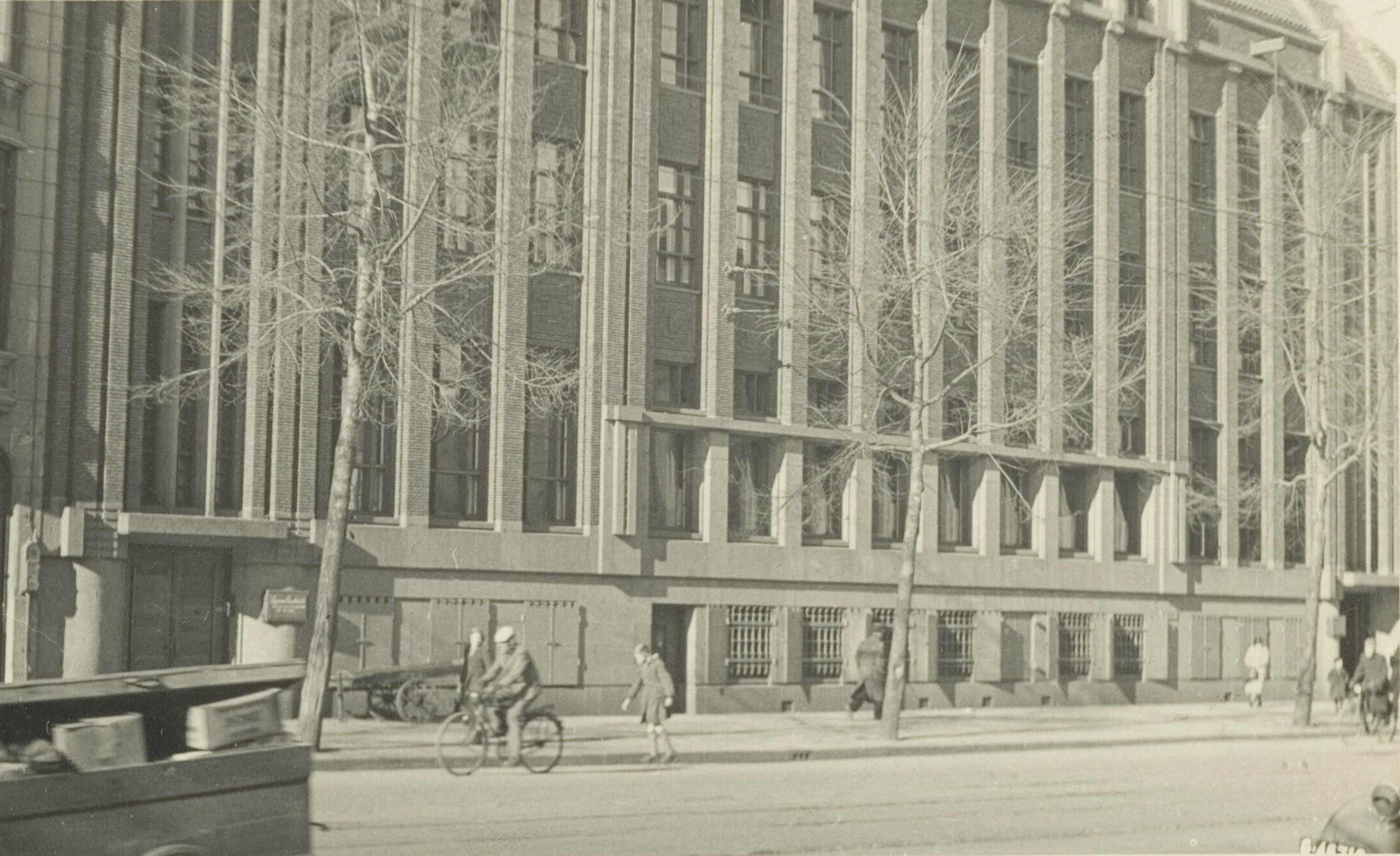Lippmann, Rosenthal & Co.
Lippmann, Rosenthal & Co., or LiRo for short, was a bank was set up by the Nazis to steal money and valuables from Jews. They were required to deposit all their bank assets, cash and valuables here. This money was then used to pay for raids and deportations.

Het gebouw van de bank Lippmann, Rosenthal & Co, maart 1944
Vervaardiger onbekend. Stadsarchief Amsterdam Copyright: Publiek domein
The bank Bank Lippmann, Rosenthal & Co. Sarphatistraat, usually called "LiRo", was founded in 1941 by the German occupier to take money and valuable goods from Jews in the Netherlands. To deceive Jews that it was a branch of the bank Lippmann, Rosenthal & Co. located on the Nieuwe Spiegelstraat in Amsterdam, it was also given that name, but that bank had (almost) nothing to do with the LiRo. The Jewish management of Lippmann, Rosenthal & Co. was fired in 1941 due to Aryanization.
The LiRo was part and parcel of the anti-Jewish policy, aimed at robbing Jews. Colloquially, the bank was also called "German Robbery Bank" or "Nazi Bank".[1] The first LiRo regulation (148/1941) of 8 August 1941 and the second LiRo regulation (58/1942) of 21 May 1942 regulated the mandatory surrender of everything of value: art, precious metals and stones, money, checks, effects etc.[2]
A LiRo department was also located in Westerbork transit camp. During the registration procedure, incoming prisoners had to exchange a certain amount of money for camp currency. They had to hand over the rest of their money and valuables to LiRo.[3]
The total value of what Otto Frank handed over to the LiRo amounted to approximately 13,000 guilders.[4]
Footnotes
- ^ Bianca Stigter, Atlas van een bezette stad: Amsterdam 1940-1945, Amsterdam: Atlas Contact, 2019, p. 234-235. Also see: Lippmann, Rosental & Co.
- ^ Verordeningenblad voor het Bezette Nederlandsche Gebied. Jaar 1941, p. 624-628 en Jaar 1942, p. 289-300.
- ^ Het Nederlandse Rode Kruis, Den Haag, Collectie Westerbork en de reconstructie van de lotgevallen na WOII, 1939-2007, inventaris, p. 40 (een bedrag van 250 gulden wordt hier genoemd).
- ^ Nationaal Archief (NL-HaNA), Den Haag, Nederlandse Beheersinstituut, Beheersdossiers, inv. nr.: 134994.